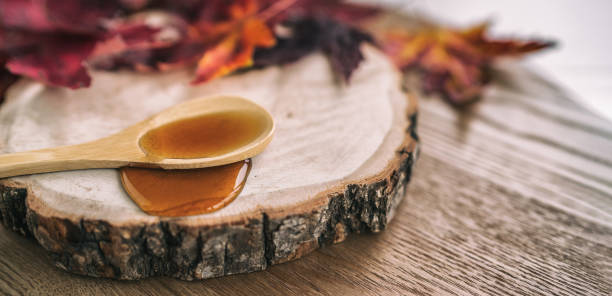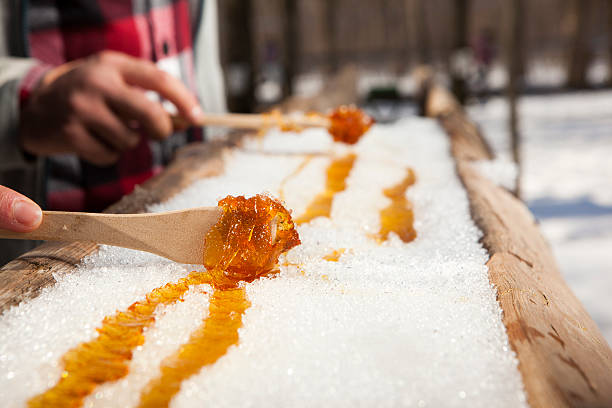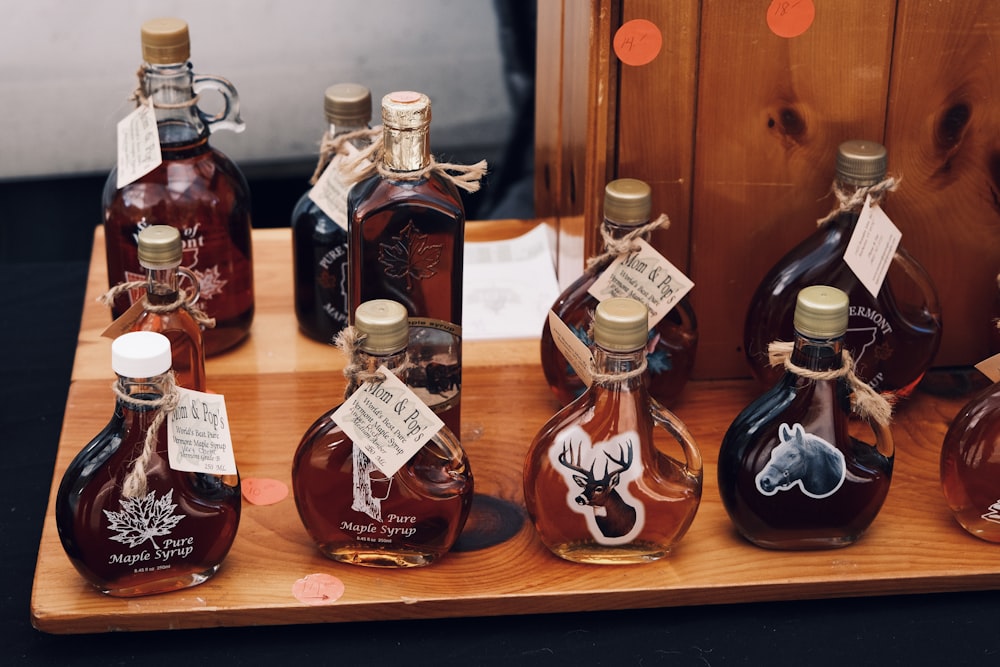If you’ve ever wondered how maple syrup is harvested, it’s a surprisingly straightforward process that Native Americans have used for centuries. It begins with tapping trees and ends with jars of sweet, delicious syrup – but there are several steps in between. In this guide for beginners, we’ll take an in-depth look at the entire maple syrup harvesting operation from start to finish so you can get your taps ready and enjoy the sweet taste of pure maple syrup in no time.
Overview of the Maple Syrup Harvesting Process
Harvesting the sweet nectar of Canadian maple syrup can be a rewarding experience. It requires patience and knowledge on the part of the harvester but can provide a seemingly endless supply of one of Canada’s sweetest natural treats. As spring arrives, it’s time to get out into the forest with your harvesting equipment and prepare for a season’s worth of sap collection and syrup production.
This guide will give you an overview of how to prepare properly and begin harvesting Canadian maple syrup. With careful selection, timing, and storage techniques, this can be a rewarding adventure all year round.
What is Tapping a Tree, and What Tools Are Needed For It?
Tapping a tree is harvesting maple syrup, which requires preparing the tree with a tapping tool. Traditionally, this involved drilling into the tree with an auger, inserting a spile, and catching the sap in a bucket. Modern technology executes tapping with a tap and plastic tubing connected to a vacuum system, which greatly increases tree sap yield.
The tools vary depending on the methods used by individual producers, but most prefer using specialized taps with special mild steel points. These tapped taps are lightweight and easy to install into the trunk or branch of any Maple tree species for their sugaring operation. It’s important to consider local laws as some regions require specific tools when Tapping a Tree for Sap production – always double-check before starting.
How to Collect Sap from Trees
Collecting sap from maple trees is the most important step in making maple syrup. It is a multi-step process that starts in the early Spring when temperatures are below freezing at night and above freezing during the day. The first step is to locate and tap a suitable tree – typically, this means healthy mature sugar maples that have been dormant for at least eight weeks during the winter.
Tapping involves drilling a small hole in the side of the tree and inserting a spile that collects the sap inside an attached bucket or bag. Sap should be collected every few days until temperatures begin to stay above freezing, usually indicating the end of the sugaring season. Whether you do it alone or with friends, collecting sap from maple trees to make the finest-grade syrup can be a fun and rewarding experience for any beginner.
Processing Maple Syrup – Boiling Points and Temperature Requirements
Knowing the right boiling point and temperature requirements is essential when tapping maple trees and processing maple syrup. While the boiling temperature of pure maple syrup has been standardized to 219°F, sap or partially boiled maple syrup must be maintained at a rolling boil of over 209°F to become certified as grade-A syrup.
For those with access to thermometers, these are the benchmarks against which you should measure your activity. However, there are certain tests that farmers use instead of thermometers to check the readiness of their syrup without having to purchase extra equipment: if bubbles appear on the surface of the boiling syrup and it forms a thread that hangs up for four seconds after it’s poured from a spoon, then it’s ready.
Storing Harvested Maple Syrup
Storing maple syrup is an important part of ensuring you can enjoy your harvest for months and years to come. The best way to store your syrup is in an airtight container in the refrigerator or freezer, depending on the amount you store. If the container becomes unsealed, it can lead to spoilage due to bacteria or other organisms.
Additionally, a dry and dark place away from direct sunlight is ideal for storing larger quantities of maple syrup, as it will help prevent crystalization. Make sure to label any containers with the date harvested so that you can observe when and when you should use them. These tips allow you to continue enjoying your maple syrup harvest for years.
The Finishing Touches – Filtering and Jugging Your Freshly-Harvested Product

Now that you’ve harvested the maple syrup from your trees and boiled it to a thick delicious syrup, it’s time for the finishing touches. The final step requires culling debris and sediment to ensure your delightful product is free of all impurities. The first part of this process involves filtering the syrup through a double layer of bakery-grade cheesecloth or other materials of similar fineness.
After thoroughly filtering it, transfer the syrup into jugs or bottles to seal in its freshness. It’s important to note that, like many products with natural ingredients, maple syrup may require re-filtering if left for long periods of time due to sedimentation or impurity accumulation. With these steps, you’ll be sure to finish your harvest with a wonderfully smooth, top-quality product.
All in all, maple syrup harvesting is a rewarding, enjoyable experience that anyone with access to maple trees can participate in. With the right tools and knowledge, you could be well on your way to producing ample amounts of this delicious natural sweetener—the key element behind any syrup harvesting venture’s success.
Ensure to follow the boiling process correctly, as this will ensure quality control, guaranteeing satisfactory results when bringing your product to market. Finally, don’t forget the little details such as filtering and jugging, as these ensure maximum shelf life for your freshly-harvested syrup – no one wants a product gone bad. With these tips and tricks in mind, we wish you a safe and successful season of harvesting maple syrup.
Published by HOLR Magazine.



